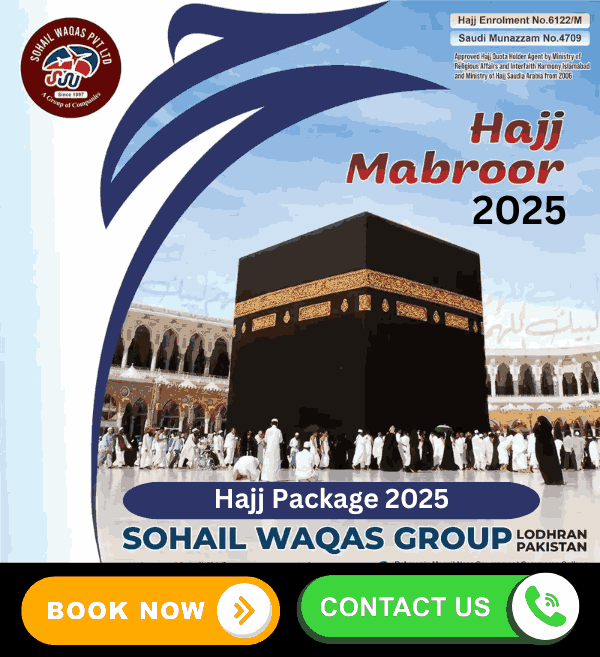Introduction
Madinah, the second holiest city in Islam, is a place of deep spiritual significance. After completing your Umrah package, visiting the city’s sacred and historical sites enriches the experience. Madinah is home to landmarks that connect visitors to Islamic history, offering moments of reflection, gratitude, and learning.
The Best Places to Visit in Madinah
Madinah holds a special place in the hearts of Muslims worldwide. The city’s rich history and religious importance make it a must-visit destination beyond the sacred pilgrimage. Several locations offer spiritual enlightenment and historical insight, making them essential stops after completing Umrah.
The Prophet’s Mosque, also known as Al-Masjid an-Nabawi, is the heart of Madinah and one of the most visited sites by pilgrims. This mosque, built by Prophet Muhammad (PBUH), houses his blessed resting place. Visiting this sacred site allows worshippers to offer prayers and seek blessings. The mosque’s serene atmosphere and magnificent architecture provide a deeply moving experience.
Quba Mosque: The First Mosque in Islam and a Place of Spiritual Reward
Quba Mosque holds a special place in Islamic history as the first mosque built by Prophet Muhammad (PBUH). It is believed that offering two raka’ahs of prayer here brings immense rewards. Its peaceful ambiance, combined with historical significance, makes it a must-visit site for those seeking spiritual connection.
Mount Uhud, the site of the historic Battle of Uhud, is another important place for visitors. This battlefield holds great significance in Islamic history, as it was here that the Prophet and his companions faced a critical battle. Pilgrims visit the graves of the martyrs and reflect on the lessons of sacrifice and faith demonstrated in this battle.
The Qiblatain Mosque: The Historic Shift in the Direction of Prayer
The Qiblatain Mosque is unique because it is where the direction of prayer (qibla) was changed from Jerusalem to the Kaaba in Makkah. Pilgrims visiting this mosque witness a key moment in Islamic history, deepening their understanding of faith and prayer.
Jannat al-Baqi, the main cemetery of Madinah, is the final resting place of many of the Prophet’s companions and family members. Paying respects here is an act of remembrance and reverence for the pioneers of Islam. Pilgrims visit this sacred ground to offer prayers and reflect on the contributions of those buried there.
Step-by-Step Guide to Visiting These Sites
When planning your visit to these sites, follow these steps for a smooth and fulfilling experience:
- Plan Your Itinerary: Prioritize the locations based on your available time and spiritual goals. Begin with Al-Masjid an-Nabawi as it is the central and most significant landmark.
- Check Visiting Hours: Some sites have specific visiting hours, so verify timings before heading out.
- Respect Local Customs: Dress modestly and follow etiquette when visiting religious places to maintain the sanctity of the sites.
- Use Local Transport: Madinah offers various transport options, including taxis and buses, making it easier to navigate between sites.
- Engage in Reflection and Worship: Take moments to pray, reflect, and appreciate the historical importance of each site.
- Capture Memories Respectfully: Photography is allowed in some areas, but always be mindful of others’ privacy and the spiritual ambiance.
Related FAQs
What is the most important place to visit in Madinah after Umrah?
Al-Masjid an-Nabawi is the most important place to visit in Madinah, as it houses the Prophet’s tomb and is a major site for worship and reflection.
Can non-Muslims visit these historical sites in Madinah?
Most religious sites in Madinah, including Al-Masjid an-Nabawi, are restricted to Muslims, but some historical sites are accessible to non-Muslims.
Is there a recommended time to visit these sites?
Early mornings or after Fajr prayer are the best times to visit, as these hours are less crowded and offer a peaceful experience.
How can I book a guided tour for these locations?
Many travel agencies, including Sohail Waqas Travels, offer guided tours covering the significant sites in Madinah for a more immersive experience.
What should I wear when visiting Madinah’s religious sites?
Modest clothing is required, with men wearing loose garments and women covering their hair and body in accordance with Islamic customs.

